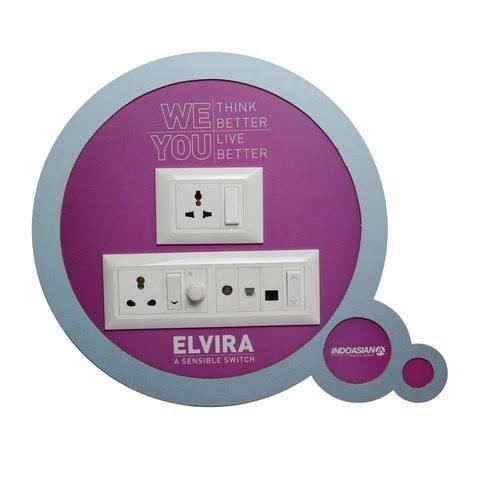
An electrical switch is a tool used to manually or automatically break or create an electrical circuit. Switches are used by a number of electrical or electronic circuits to activate or control the entire circuit. The types of connections that a switch can make are determined by two critical elements: pole and throw.
Different Switches
The many switch types are divided into four categories, namely:
- SPST (single pole, single throw)
- SPDT ( single pole double throw)
- DPST (double pole, single throw)
- DPDT ( double pole double throw)
SPST (single pole, single throw)
A simple ON/OFF switch that connects or disconnects two terminals is the SPST. This switch provides the owl circuit’s power source. The toggle switch, commonly known as the light switch that uses an SPST switch, is displayed below. This type of switch has one input and one output. A single wire is connected to and controlled by this light switch circuit. When this switch is in the circuit below’s ON or closed position, current flows through the two terminals, and the circuit’s bulb blinks. This switch has an ON/OFF position. No current passes via the two terminals when the switch is off or open. These options are ideal for AC switches if a timing mechanism is added, then it will be suitable for a time switch.
SPDT (Single Pole Double Throw)
Three terminals make up the SPDT switch, two of which are utilized as outputs and one of which is an input. It establishes a connection to a terminal that is shared with another terminal. Replace the other terminals with the COM terminal on the SPDT switch. For example, we may use COM and A or COM and B. An SPDT switch is typically used in a three-way circuit to turn on or off lights from two locations, such as the top and bottom of a staircase. The circuit below operates when switch A is closed; only light A will illuminate, and light B will be turned off.
DPST (Double Pole, Single Throw)
The DPST switch has two poles, meaning it has two identical switches that are placed side by side. Because of how this switch operates, a single push can control two separate circuits simultaneously. This switch has four terminals—two inputs and two outputs—and is used to turn two circuits on or off. This switch’s primary function is to control a 240V appliance in which both supply voltages must be ON while the neutral wire may always be connected. Current begins to flow through two circuits when this switch is turned on and stops when it is turned off.
Double Pole Double Throw (DPDT)
This switch connects one of two outputs to two inputs from separate circuits. It’s the same as having two SPDT switches. The switch position determines how many paths each contact can travel between the two connections. They operate as two separate SPDT switches operated by the same actuator when in the ON-ON or ON-OFF-ON modes. There can only be two active loads at once. A DPDT switch can be used in any application that calls for an open and closed wiring arrangement.
Conclusion
Thus, the focus of this article is on different switch types and unique touch-control applications. We believe you now have a clearer understanding of this idea. Furthermore, if you have any questions about this topic or the applications of touch-controlled switch projects, please visit our website IndoAsian!




